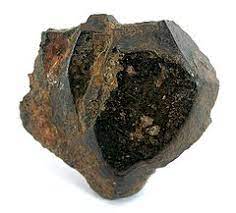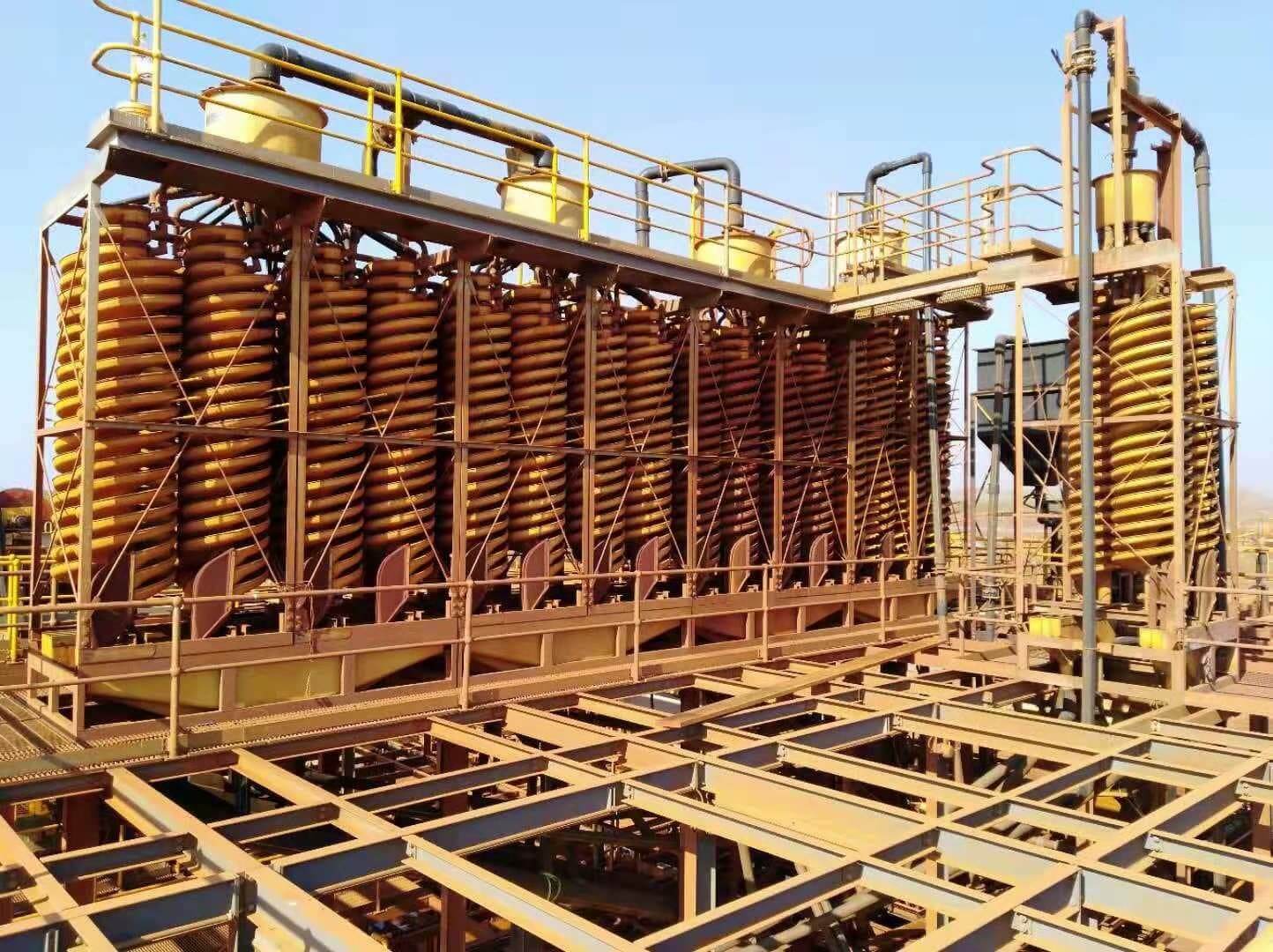The progress of ilmenite flotation research The theoretical content of TiO2 of ilmenite (FeTiO3) is 52.63%, which is the main mineral for extracting titanium and titanium dioxide.
The industrially developed primary ilmenite is a composite deposit containing iron and titanium. The beneficiation process is divided into two parts: iron and titanium. The raw material of the titanium dressing plant is the tailings of iron dressing. Titanium separation methods include gravity separation, magnetic separation, electrical separation and flotation separation. The industrial process for selecting titanium is as follows:
I.Single flotation or magnetic separation process
For the ilmenite ore with fine embedded particle size, the ilmenite concentrate can be obtained directly by flotation method after grinding and iron separation, or firstly use a wet strong magnetic separator as roughing equipment, and then the magnetic separation concentrate can be used to recover titanium by flotation method. Single flotation or magnetic separation. The flotation process is relatively simple, and the operation and management are convenient, but the use of flotation reagents will increase the cost of beneficiation.
A.Flotation process
Flotation method is an efficient method for recovering fine-grained ilmenite. Flotation is used for the separation of primary titanium-bearing ores, especially for the separation of fine-grained titanium-bearing ores, and sometimes for the beneficiation of coarse concentrates. Flotation is an effective method for recovering fine-grained ilmenite. Before ilmenite flotation, generally, sulfide minerals are sorted by flotation method, and then ilmenite flotation is carried out. Sulfide flotation adopts conventional flotation reagent system, that is, xanthate is used as collector, pine oil is used as foaming agent, sulfuric acid is used as pH adjuster, and some plants also use copper sulfate as activator for sulfide flotation.The flotation research on ilmenite is generally the research on flotation reagents.
The commonly used collectors for ilmenite are mostly fatty acids, and abroad are mostly oleic acid and its salts, such as tar oil soap or a mixture of collectors and kerosene. Commonly used collectors are: fatty acid collectors, arsenic-containing collectors, hydroxamic acid collectors, etc. The commonly used activators in ilmenite flotation are mainly lead nitrate, pH adjusters are generally H2S04, and inhibitors are mainly water glass, oxalic acid, sodium hexametaphosphate, carboxymethyl cellulose (CMC), etc.
Single flotation method is a more effective beneficiation method for the separation of fine-grained embedded titanium vein ore. The single flotation process is simple and easy to operate and manage. However, due to the increased cost of chemical consumption and the environmental protection problems caused by tailings discharge, it is currently widely used in industry.
B.Magnetic separation
There are many kinds of titanium minerals. It has been found that there are more than 140 kinds of titanium minerals with a TiO2 content of more than 1%, but only a few minerals have utility value at this stage. Primarily ilmenite and rutile, followed by perovskite, anatase, ilmenite, brookite, and perovskite. Ilmenite accounts for about 85–95% and is the main source of titanium and titanium products. 41.4% of ilmenite exists in ore deposits, and 58.4% exists in vanadium-titanium-magnetite-titanium-magnetite.
Ilmenite: Hexagonal crystal system, the crystal form is thick plate, generally brown, with metallic luster, medium magnetic, good conductor. This combined beneficiation process has the advantages of large processing capacity, simple operation, low equipment investment and good beneficiation effect.
The beneficiation process is generally divided into the following three types according to different types of ilmenite minerals:
- Ilmenite-magnetite type beneficiation, because ilmenite in the ore often appears as an independent inclusion in the magnetite and non-metallic minerals. The principle of dealing with this type of ores is to throw the tails as coarsely as possible, and then grind and magnetically separate the ilmenite concentrates.
- Hematite-ilmenite type beneficiation, usually hematite and ilmenite in this type of ore are fine-grained and closely coexisted. The beneficiation can only select the ilmenite mixed concentrate, and then use fire smelting to obtain pig iron and high titanium slag.
- For the beneficiation of perovskite-titanomagnetite type, generally wet weak magnetic separation is used to select titanomagnetite. Then, the calcite is flotated with a fatty acid collector, and the ilmenite is flotated after the middle ore is removed.
II. Combined process
In the separation of ilmenite, the main beneficiation processes are “gravity separation – strong magnetic separation – flotation” and “gravity separation – strong magnetic separation – electrical separation (sulfur removal before separation)”. Strictly according to the grading and selection, different technological processes are adopted. Separation of ilmenite by combined process is the development direction of ilmenite beneficiation technology.
A. Gravity separation – magnetic separation – flotation combined process
The characteristics of the gravity separation-magnetic separation-flotation process flow are that the raw ore entering the titanium separation is first classified, the coarse-grained grade adopts gravity separation and roughing, the magnetic separation is selected, and the fine-grained grade adopts flotation. Gravity uses a shaker, and magnetic separation uses a dry magnetic separator. The particle size of flotation feeding is generally -0.074 mm, and the flotation machines used are sulfuric acid, sodium fluoride, oleic acid, diesel oil and pine oil. Magnetic separation – Magnetic separation includes weak magnetic separation and strong magnetic separation. The function of weak magnetic separation is to separate the titanomagnetite remaining in the tailings of magnetic separation, so as to facilitate the smooth progress of strong magnetic separation. The purpose of strong magnetic separation is to discharge qualified tailings, improve the selected grade of titanium flotation, and reduce the amount of titanium flotation. The use of high gradient magnetic separation can effectively recover the fine-grained ilmenite in the ore, and can throw away part of the fine mud in the ore, thereby achieving the purpose of roughing the raw ore and throwing tails. The ore is processed by the process of strong magnetic pre-selection, and the grade is improved, which lays the foundation for the subsequent flotation to obtain the final titanium concentrate.
B. Gravity separation – electrical separation combined process
The low-density gangue or waste rock minerals are discarded by gravity separation method, and the obtained rough concentrate is subjected to electrical separation to obtain ilmenite concentrate. For sulfur-bearing ores, flotation is required to remove sulfide minerals prior to electrical separation.Gravity separation-electrical separation process is characterized by the use of re-selection method for rough selection and electrical selection method for selection.The equipment used in gravity separation is mainly spiral concentrator (including spiral chute), followed by shaking table. Shaking tables are widely used in ilmenite beneficiation, especially some small mines can obtain qualified concentrates by using shakers.The equipment used in the electro-separation is a roller electrostatic separator, the purpose of which is to further enrich the gravity-separated coarse concentrate, so that the product can reach the final concentrate standard.
C. Coarse Grain Gravity Separation, Electric Separation – Fine Grain Magnetic Separation – Flotation Combined Process
The characteristics of this process are that the selected materials are divided into two parts, coarse and fine, and the coarse particles are processed by the methods of gravity separation coarse and electrical selection.
The beneficiation process of ilmenite depends on factors such as deposit type, ore properties and mineral composition. Since the properties of primary titanium ore are relatively similar and the target minerals are relatively simple, the beneficiation method and beneficiation process adopted have commonalities.
In a word, due to the complex mineral properties of ilmenite, and there are great differences in the properties of different minerals, it is necessary to determine the appropriate beneficiation process and equipment through beneficiation tests to ensure the beneficiation effect of actual production.
LATEST PRODUCTS
Twin Screw Feeder
【Feeding Capacity】 10-160 t/h【Power】 2.2-…
Tubular Screw Conveyor
【Capacity】6-50 m3/h【Procesible Material】 …
Heavy Plate Feeder
Capacity: 100-240 m3/h Power: 15-45 kW Speed: 0…











